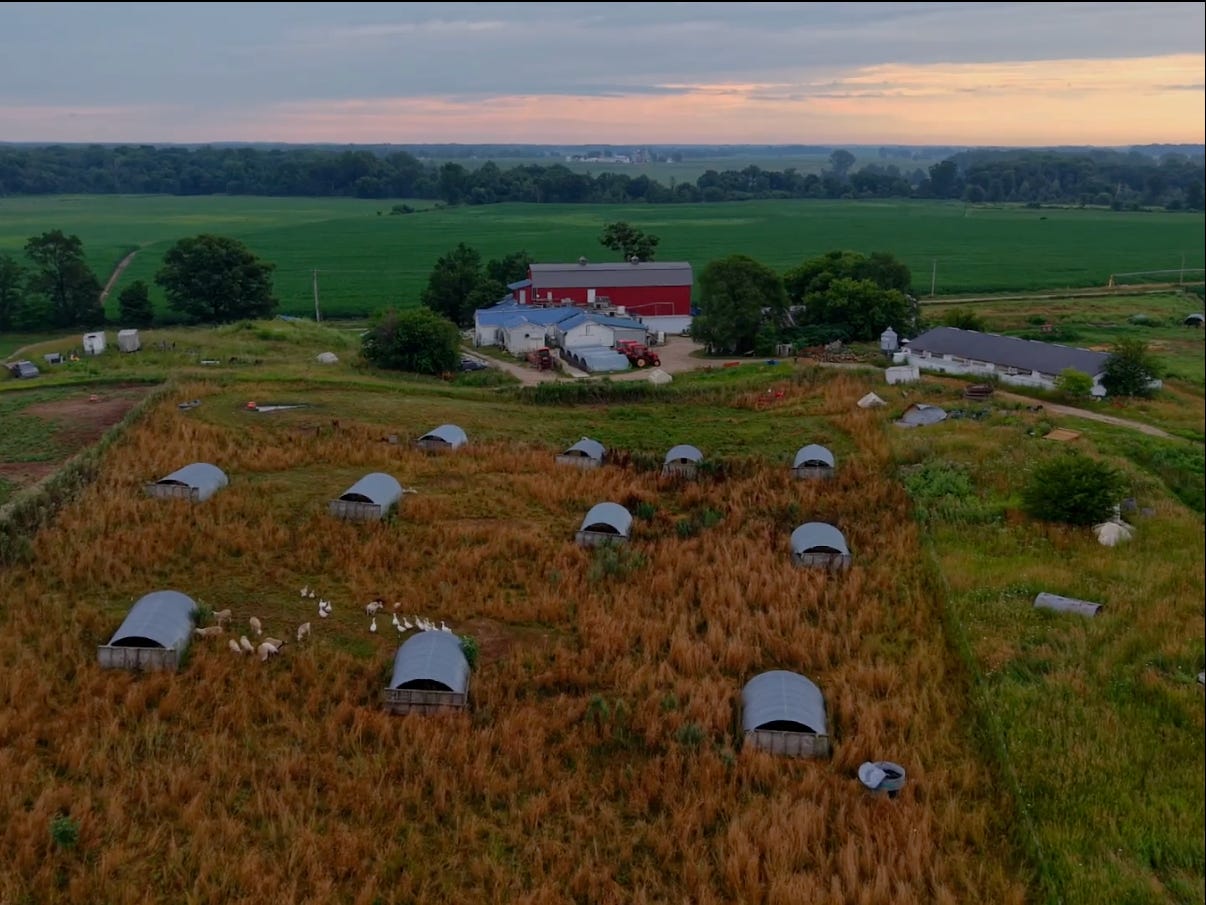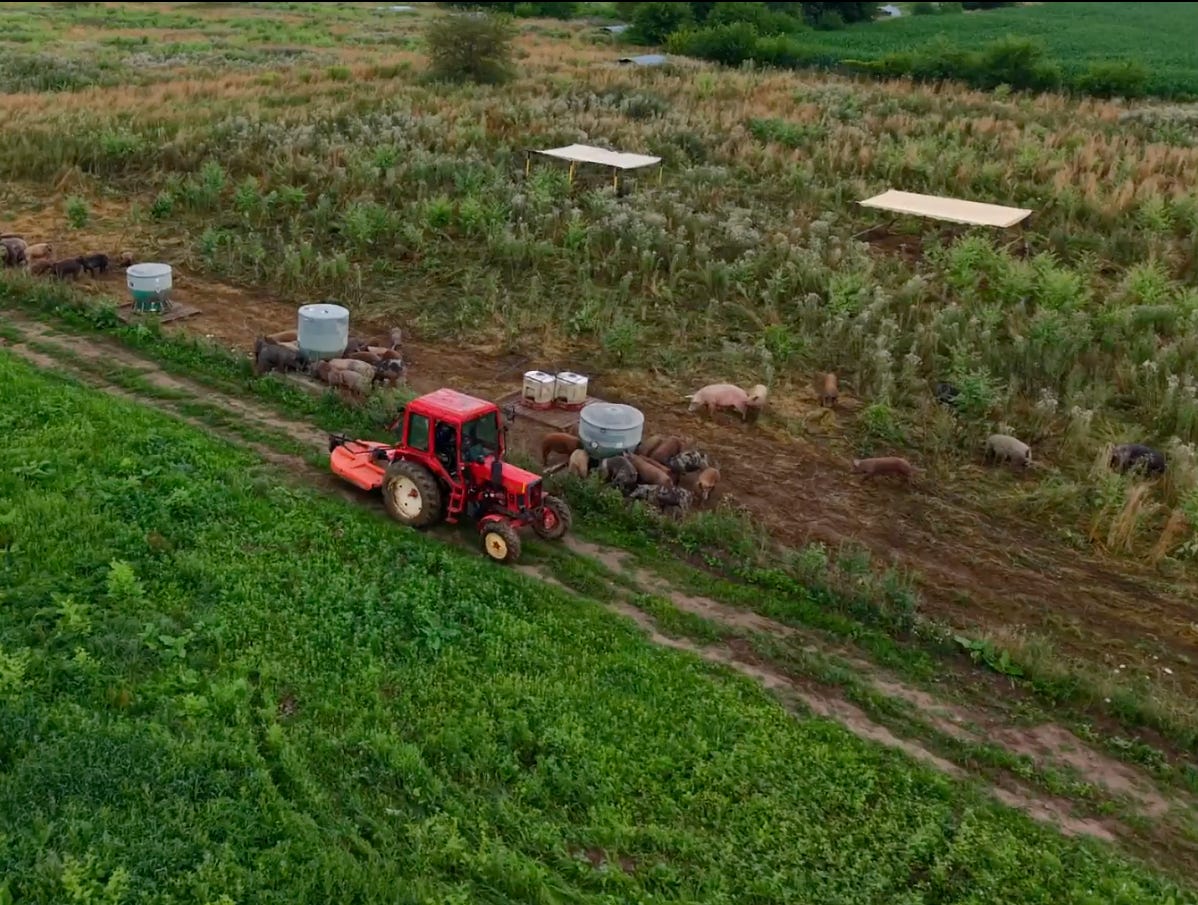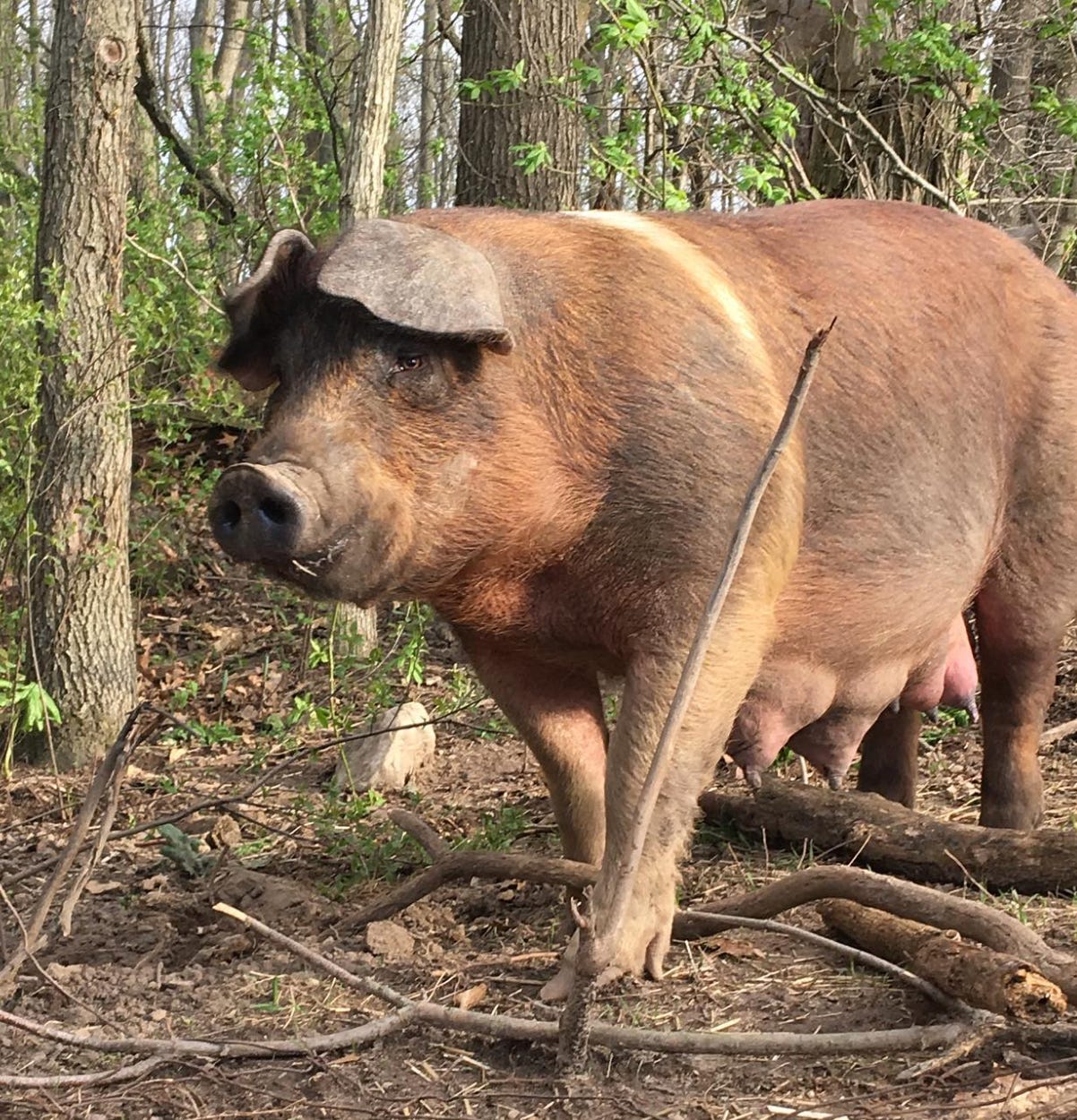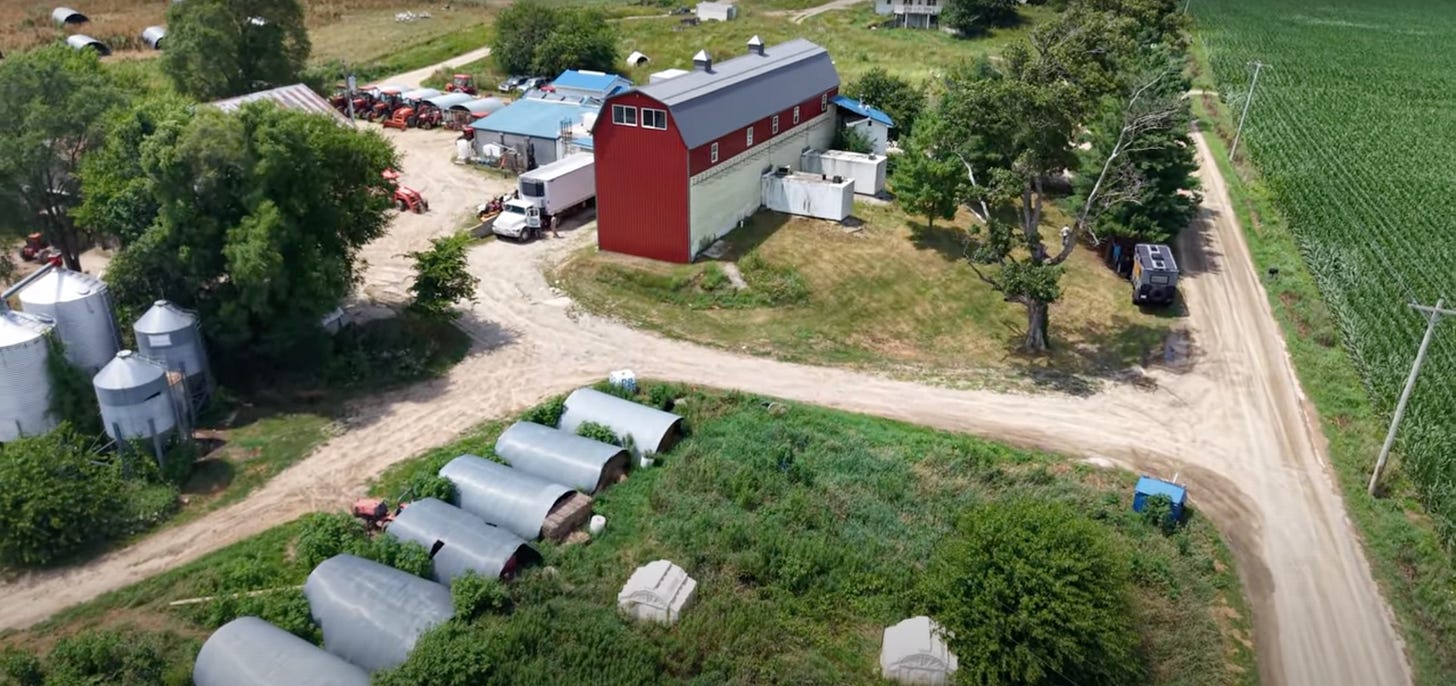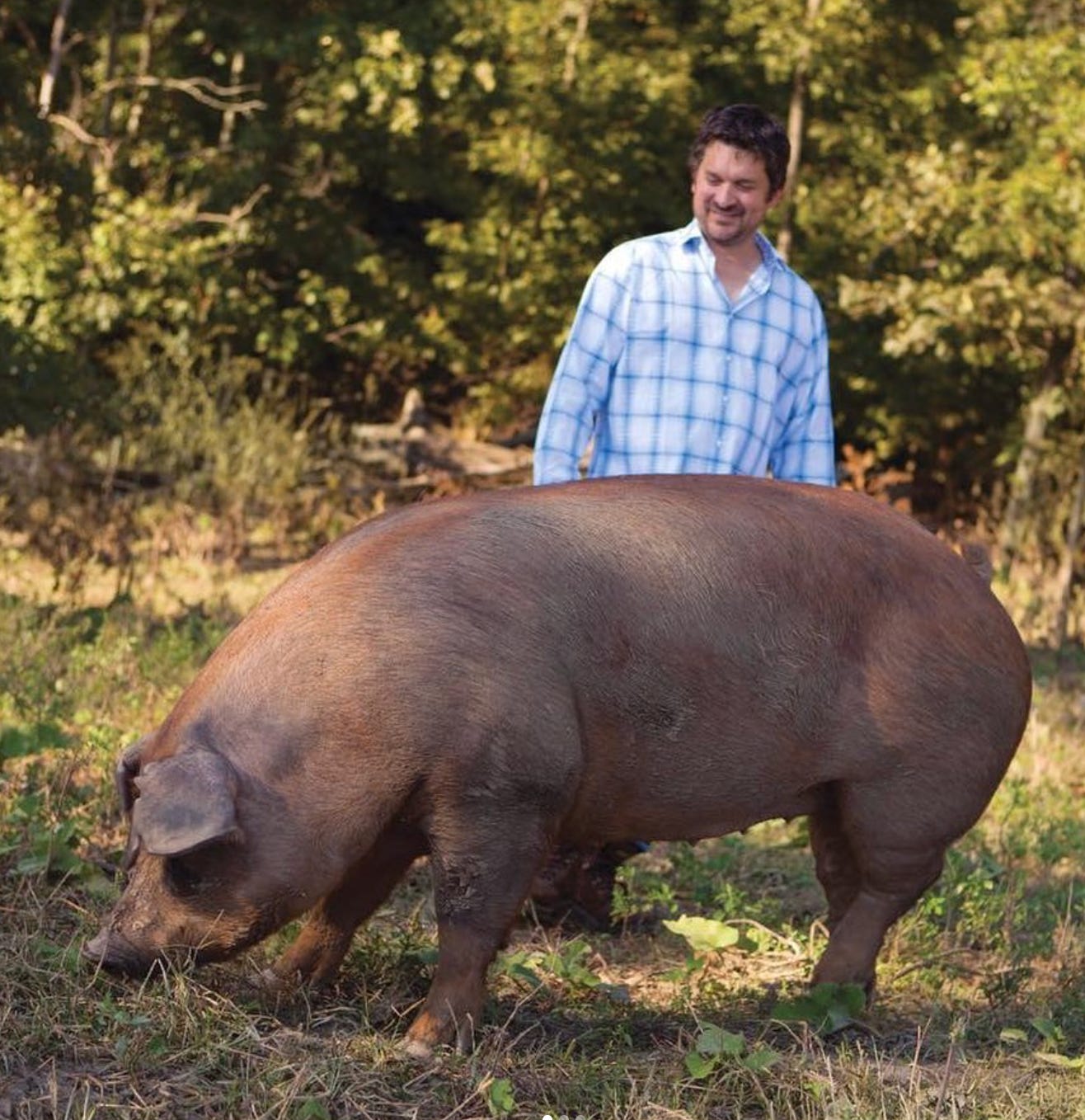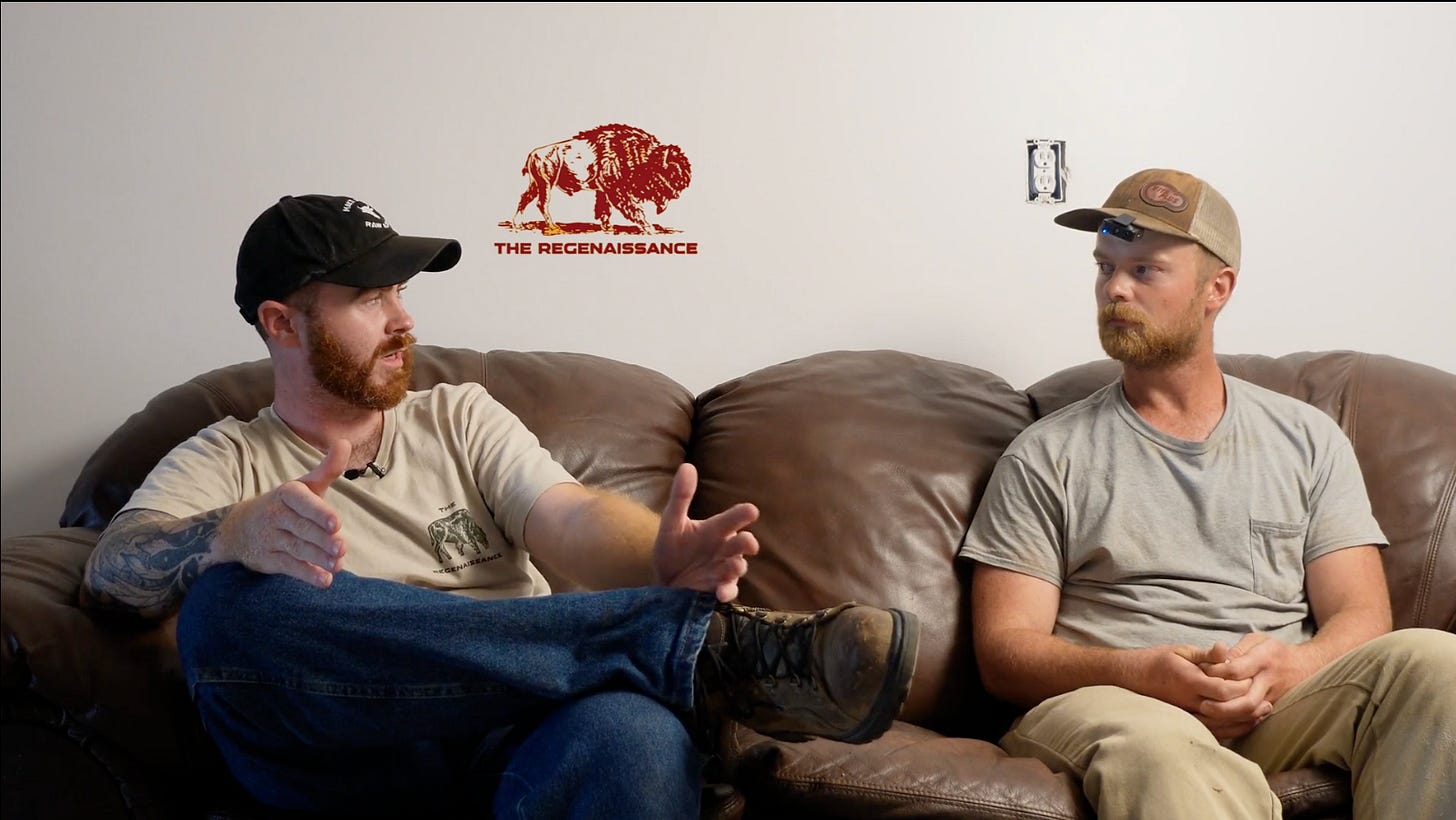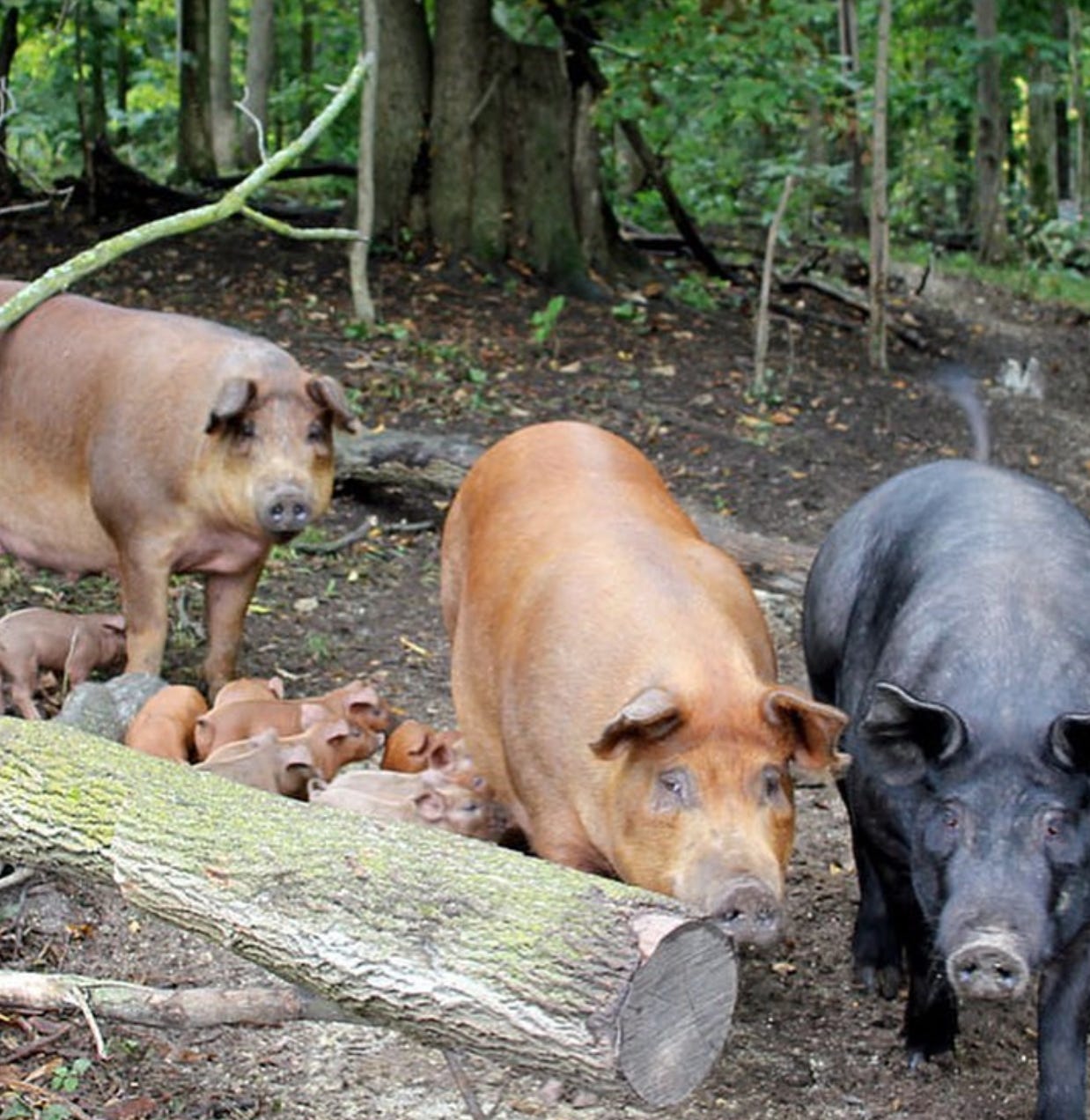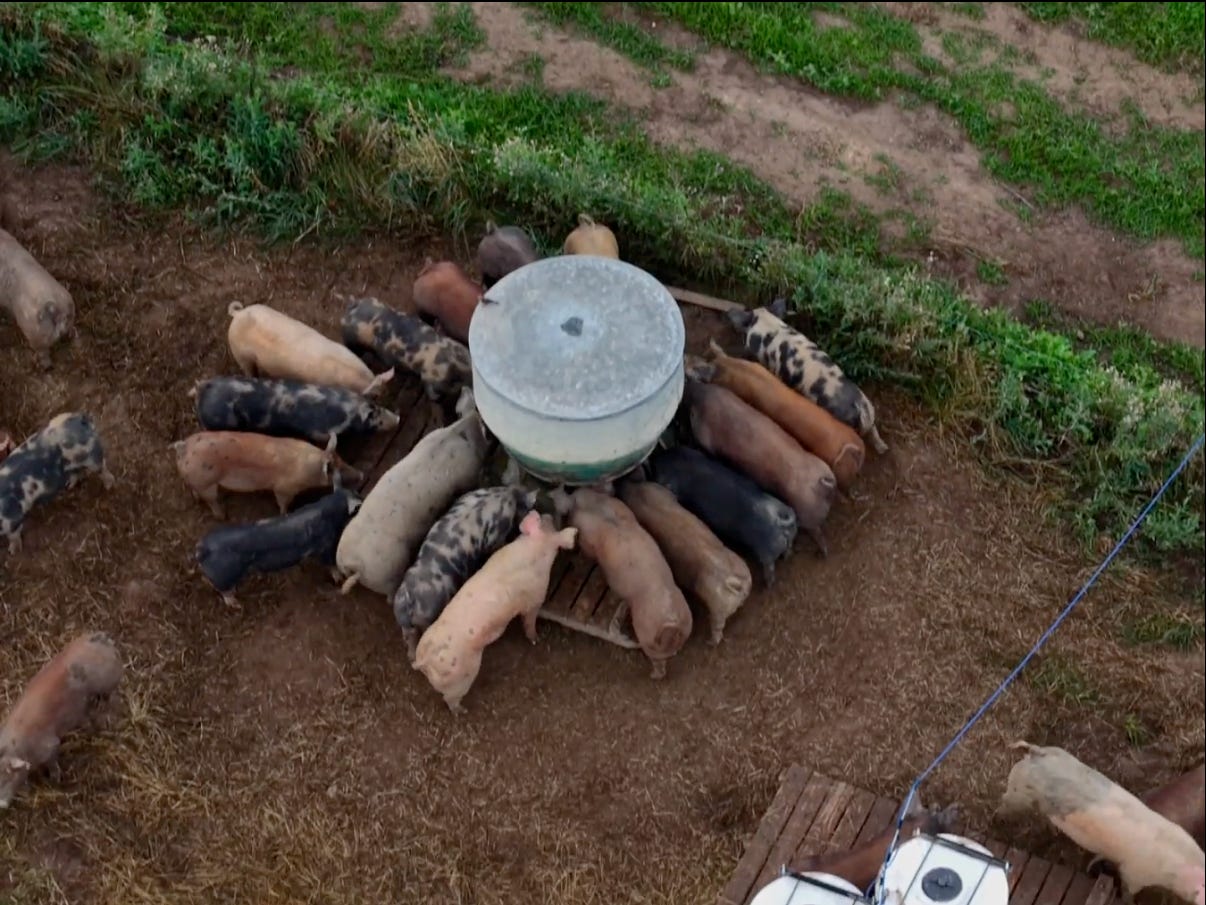A Different Kind of Pig Farm: The Gunthorp Story
How Three Generations Learned to Farm With Nature, Not Against It
Follow the journey of an Indiana farm family proving that pigs belong on pasture, transforming land and lives through regenerative agriculture.
What You'll Learn:
Why one family chose pastures over confinement barns
How pigs can heal land instead of destroying it
What "adaptive grazing" really means in practice
The wisdom passed between farming generations
How regenerative farming transforms communities
What real pig farming looks like
The morning mist still clings to the Indiana woodlands as Greg Gunthorp walks through paddock 23, checking on a group of sows with their week-old piglets. In the distance, his son Evan studies the grass growth in paddock 35, calculating when it'll be ready for the next group. This is regenerative pig farming—though neither man would have called it that when they started.
The Education of a Pig Farmer
"When I was little, we didn't have any of this," Greg says, gesturing at the energy-free waterers that dot the landscape. He remembers hauling water in bitter winters, managing kerosene heaters under water troughs, calculating exactly how much water the pigs would drink. Too much, and you'd chip away a block of ice the next morning. Too little, and the pigs went thirsty.
Those memories shaped everything that came after. When Greg took over the farm from his father, he knew there had to be a better way. Not easier—better. Better for the pigs, better for the land, better for the future his own children might inherit.
The breakthrough came gradually, through observation and failure and stubborn persistence. Greg noticed that pigs, given space and choice, are remarkably clean animals. They only wallow in mud when overheated—they can only sweat through their noses, making them vulnerable to heat stress. Given shade and space, they create distinct areas for sleeping, eating, and waste.
"Consumers think pigs are dirty because that's all they've seen," Greg explains. "But watch them here. They're probably the cleanest animals on the farm."
Learning the Language of Land
The real education came from the land itself. In the early years, Greg moved pigs based on gut instinct and visual cues. But patterns emerged. In May and early June, when cool-season grasses explode with growth—producing 40-60% of their annual yield—paddocks recovered in just 25 days. By late summer, that same ground might need 90 days of rest.
This wasn't just about grass height. It was about understanding the complex dance between soil, plants, weather, and animals. The orchard grass and clover in the bottomlands behaved differently than the mixed forages on the slopes. Even the "weeds"—burdock and thistle—played their role, with pigs managing them through selective grazing.
Enter Evan, the next generation. Where Greg relied on decades of observation stored in memory, Evan brought spreadsheets and systematic thinking. Not to replace intuition, but to enhance it.
"Trust me, it's all in his head," Greg says of his son with evident pride. "But he's way more about putting things on paper than I ever was."
The Woods Tell a Story
The real transformation began when they bought the wooded acreage from an Amish hunter. For years, Greg had watched this land, knowing it held potential. When it finally came to auction, he saw beyond the trees to what could be.
Pigs, it turns out, are forest animals at heart. Given choice, they graze in the open during cool morning and evening hours, then retreat to the woods' shelter. This insight drove the creation of their 50-paddock system.
"We could have made six big paddocks," Greg admits. "But then every day would be individual decisions. Where do these sows go? Which paddock is ready? Who decides?"
Instead, they created a system that thinks for itself. Paddock 1 leads to paddock 2 leads to paddock 3. New sows arrive every three weeks. Pigs move to finishing areas every six weeks. Any employee can learn the pattern in days, master it in weeks.
The Miracle of Appropriate Technology
Walk the farm today, and you'll see innovations born from necessity. The energy-free waterers use ground temperature—a constant 52-54°F from deep wells—and superior insulation to prevent freezing. No electricity, no propane, just physics and smart design.
The farrowing huts reveal similar wisdom. Six-foot bent steel sheets create A-frame shelters where sows can stand in the center but must lie down to reach the edges. Piglets quickly learn to rest along these safe zones, dramatically reducing crushing losses.
"It's not about having the fanciest equipment," Greg notes. "It's about having the right equipment."
This philosophy extends to every aspect. Sows arrive at farrowing paddocks two weeks early, not by accident but by design. They need time to pack down straw bedding into the perfect consistency—firm enough for newborn piglets to navigate, insulating enough to protect them.
When Pigs Teach Patience
The health management system emerged from a simple observation: given space, pigs doctor themselves. A pig feeling unwell drifts from the group, moves slower, rests more. In confinement, such weakness invites aggression. On pasture, it allows recovery.
"We don't need antibiotics because we don't create the conditions that require them," Greg explains. The all-in, all-out system means pig groups never mix ages. Extended paddock rest breaks disease cycles. Appropriate genetics—heritage breeds selected for hardiness—complete the picture.
This isn't primitive farming. It's sophisticated simplicity, refined through generations of observation.
The Rhythm of Seasons
Spring arrives with explosive grass growth and easy decisions. Twenty-five-day rotations, abundant forage, perfect conditions. Evan walks the paddocks with confidence, knowing the land has surplus to give.
Summer brings challenges. Grass growth slows, rest periods extend to 60, 75, even 90 days. Shade structures become critical. Pigs spend more time in the woods, emerging only for morning and evening grazing. The waterers work overtime.
Fall feels like a sigh of relief. Growth slows but steadily continues. The pigs grow thick coats. Bedding needs increase in the farrowing huts.
Winter tests everything. The energy-free waterers prove their worth as temperatures plummet. The woods provide crucial wind protection. On the coldest mornings, Greg might need to break ice from the low-volume farrowing waterers, but the main systems flow freely.
"Every season teaches something," Evan reflects. "You can't fight it. You work with it or you fail."
Passing the Torch
The moment of transition came quietly. Evan had left college, feeling the pull of the farm stronger than any classroom. "My phone would ring during lectures—real decisions needed on real land. How could I sit there talking about theory?"
Greg understood. He'd made his own choice decades earlier, choosing dirt under his fingernails over easier paths. But watching Evan take the grazing program beyond what Greg had imagined—that brought unexpected satisfaction.
"He sees things I missed," Greg admits. "The systematic approach, the record-keeping, the way he can explain it to others. I just did it. He understands why it works."
What the Pigs Know
Stand quietly at the paddock's edge and watch. The sows move deliberately, teaching their piglets the boundaries of safety. They know which corners catch morning sun, where the sweetest clover grows, how to build the perfect nest in their hut.
This is knowledge no textbook contains. It's written in the land itself—in the paths worn by countless hooves, the favored wallows, the trees rubbed smooth by satisfied backs.
The pigs are teachers, if you listen. They show where water naturally collects, where soil compacts too easily, which forages thrive under pressure. They demonstrate that destruction and creation exist in balance—that disruption can mean renewal when properly managed.
The Wider Circle
Visitors come now, drawn by curiosity or skepticism. They expect mud and stench, the confirmation of their assumptions. Instead, they find pigs expressing their essential pig-ness—rooting, grazing, socializing, thriving.
"What breed are they?" they ask, surprised by the variety.
"What do they eat?"
"Where are the babies born?"
"How do you manage in winter?"
Each question opens a conversation about food, farming, and the future. Greg and Evan answer patiently, knowing that every visitor who leaves understanding represents dozens who might choose differently at the grocery store.
Looking Forward
The farm tells multiple stories simultaneously. It's a business, yes, but also a classroom, a laboratory, an ark preserving genetics and wisdom. The 50 paddocks rotate through their eternal cycle, each rest and recovery building soil for the next generation.
Evan watches his young children now beginning to help with chores. Will they carry this forward? The question hangs unspoken. But the system is designed to endure, to teach anyone willing to learn its rhythms.
"We're not just raising pigs," Greg says finally. "We're raising a way of thinking about farming. The pigs are almost beside the point."
Almost, but not quite. Because in the end, it's the pigs that make it all possible—their rootling and grazing, their manure and disturbance, their ancient partnership with humans who learned to listen.
As morning turns to afternoon, work continues. Fences to check, water to monitor, pigs to move. The elaborate dance of regenerative pig farming plays out across the Indiana landscape, guided by farmers who learned that the best solutions often come from simply paying attention.
Frequently Asked Questions
Q: Why did Gunthorp Farms choose outdoor systems over conventional barns? A: The decision evolved from observation and experience. The Gunthorps noticed that given space and appropriate conditions, pigs are naturally clean, healthy animals. Outdoor systems allow pigs to express natural behaviors while building soil health. Modern infrastructure like energy-free waterers makes outdoor farming practical year-round, while the 50-paddock rotation system makes it manageable and teachable.
Q: How do they know when to move pigs to fresh paddocks? A: Timing depends on grass growth rates, which vary dramatically by season. In peak spring growth, paddocks recover in 25 days. During summer stress, they might need 90 days. Evan Gunthorp combines visual observation with detailed records, watching grass height, plant diversity, and soil conditions. The systematic rotation means decisions follow patterns rather than daily guesswork.
Q: What makes their system truly "regenerative"? A: Instead of concentrating waste that becomes pollution, their rotation distributes fertility across the landscape. Pig disturbance stimulates plant diversity. Extended rest periods allow full recovery. The woodland paddocks are especially resilient, as forest systems naturally process higher nutrient loads. Over time, paddocks become more productive, not less—the hallmark of regenerative agriculture.



